Norwegian waffles are a must-have snack when visiting Norway. Here’s everything you need to know about this traditional treat.
If you ever visited Norway, you almost certainly came across Norwegian waffles at some point during your travels. This seemingly ever-present treat is simple to make and can be enjoyed with a variety of toppings.
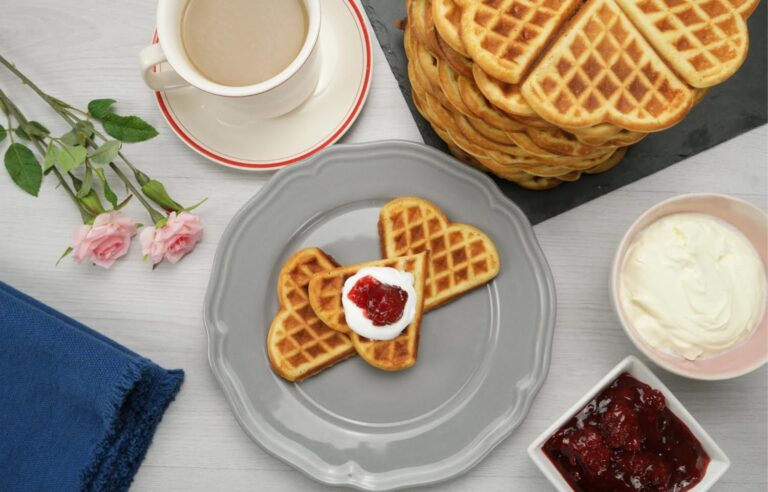
So whether or not you have tasted Norwegian waffles before, grab your apron and join us as we explore the world of Norwegian waffles, or “vafler” as we say in Norway.
These heart-shaped delights are more than just a scrumptious snack; they're a symbol of kos, togetherness, and Norwegian culture at its finest.
From cozy kaffebesøk gatherings to the intriguing history that makes these waffles a national treasure, we're covering it all. And for those who can't resist the temptation any longer, we'll even share the very best recipe so you can whip up your own batch at home.
The history of Norwegian waffles
Despite being widely available and universally celebrated in the country as one of the most Norwegian things ever, waffles did not actually originate in the land of the Vikings.
We know that waffle irons were first used in Europe in the 14th century, and likely made their way to Norway from Germany, the Netherlands, or Belgium.
The earliest waffle recipe documented in Norway dates from the 18th century. Since it included expensive ingredients such as butter, sugar and cream, it was likely a treat reserved for special occasions, such as weddings.
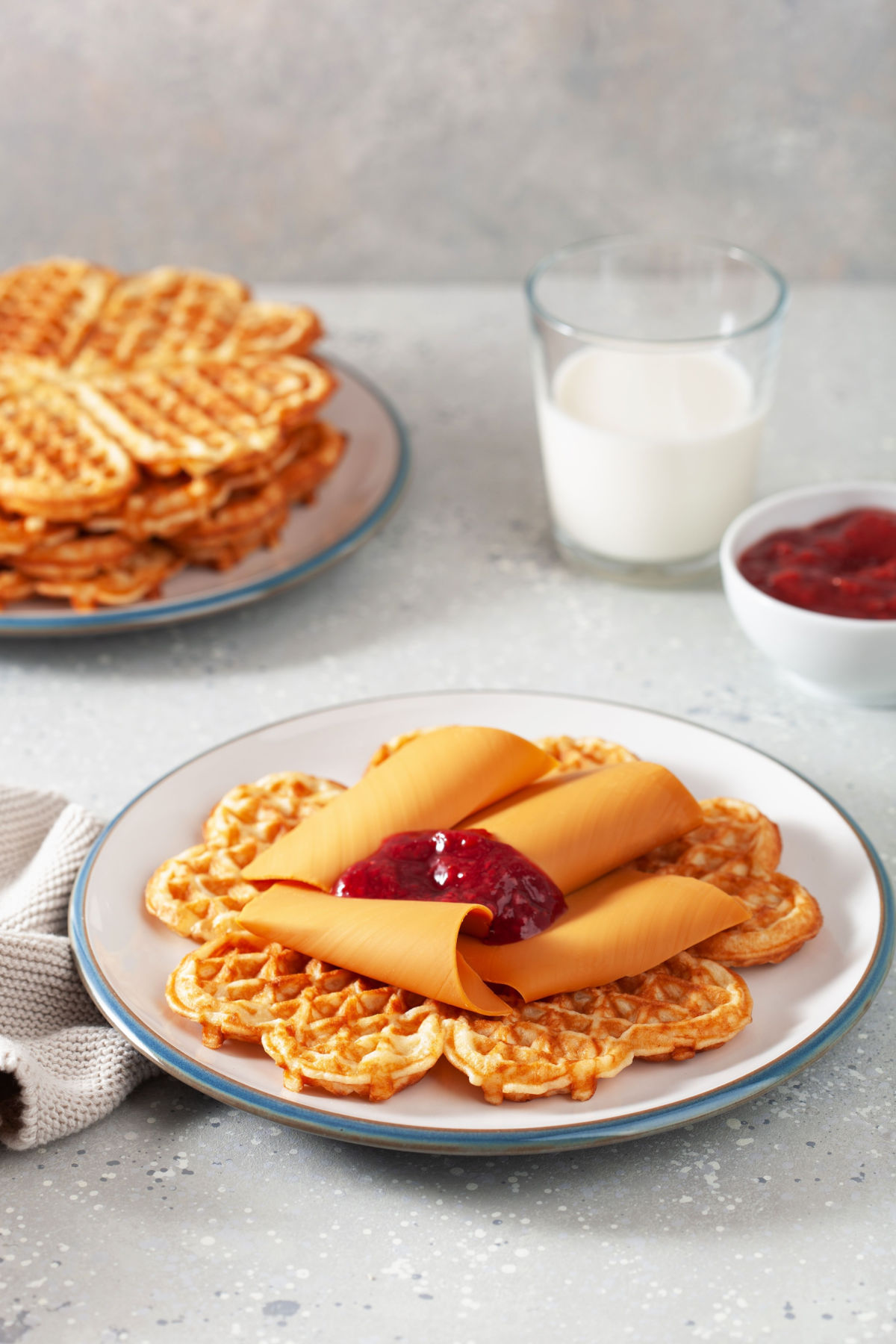
Evidence also shows that people at the time used waffle irons to serve leftover porridge with a twist. Porridge was a big part of peasants’ everyday fare, and food waste was certainly not an option in a country like Norway that knew more than its fair share of famines.
Initially, waffle irons were heavy, cast-iron things that you heated up over an open flame. In the 1930s, the first electric waffle irons appeared, and their popularity exploded in post-war Norway, making the waffle a true staple of Norwegian food culture.
Norwegian waffles: What do they taste like?
Norwegian waffles are different from their American and Belgian counterparts.
American waffles come in various incarnations, but they are typically a little thicker than the Norwegian ones, and often a bit crispy on the outside, which is usually not the case for Norwegian waffles.
Belgian waffles come in two main varieties: the gaufre de Liège, yeast-based, cornerless, caramelised, buttery on the inside and crispy on the outside, and the gaufre de Bruxelles, rectangular, a bit less crispy and often topped with berries, chocolate and whipped cream. Both are way thicker than the Norwegian ones.
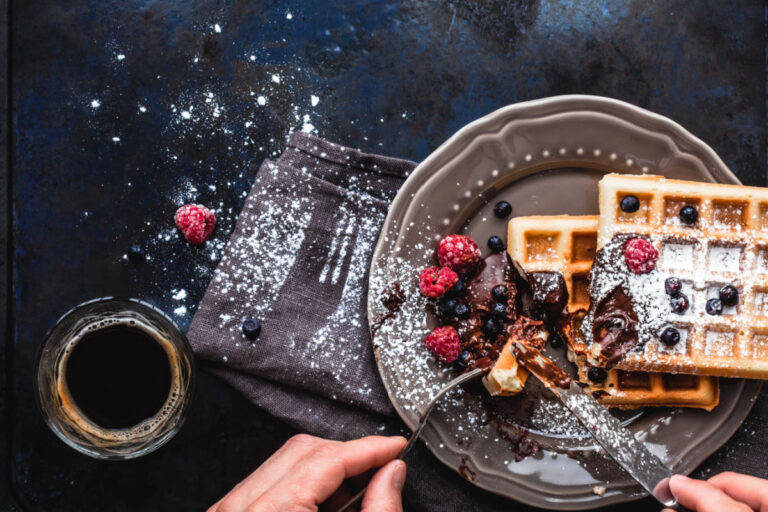
Norwegian waffles are typically thin and soft. They contain no yeast but baking powder instead, and have a light vanilla aroma.
They are roughly circular in shape and they can be easily sectioned into heart-shaped portions that are usually topped with a garnish. They are never doused with syrup since they are most commonly eaten by hand like a taco, and not from a plate with a fork and knife like a pancake.
Popular Norwegian waffle toppings
A very popular topping for Norwegian waffles is a slice of brown cheese. This caramelised cheese product with an unusual sweet-salty flavour is much loved by Norwegians and either revered or reviled by foreigners.
A safer bet if brown cheese is not your thing is to go for the rømme og syltetøy option. Rømme is essentially sour cream, and syltetøy is plain old jam (most often blueberry or strawberry).
Other toppings are also possible but not as common. Some people will have white cheese, while rumours suggest people in Bodø top theirs with sliced, hard-boiled eggs and kaviar.
Norwegian waffle culture
Norwegian waffles are easy to love, and they are the exact mix of simple-complicated that makes them simultaneously easy to make but not something you would be bothered to do every day.
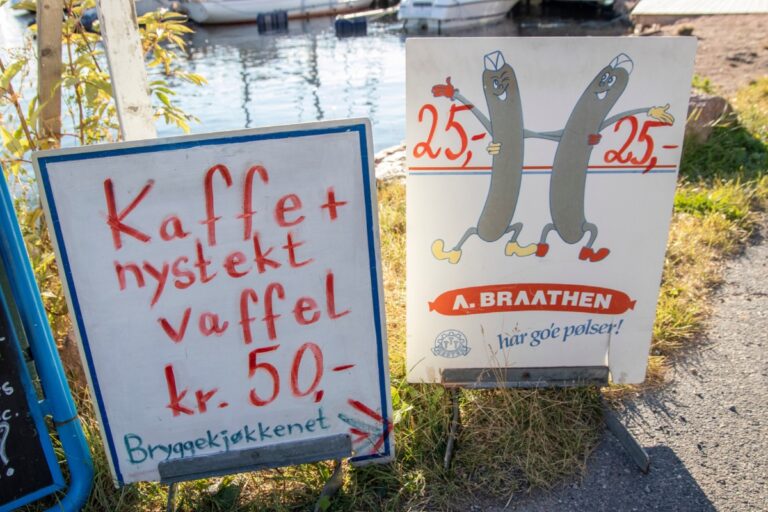
They are simple because they consist of a batter that’s easy to mix, and that you can prepare in advance and bring with you to make the waffles at the last minute before serving them.
They are complicated because they have to be cooked, which can take a while when you’re making a big batch. Also, the whole process is a bit of a mess which will require cleaning.
But the complexity just means they keep their status as something special you don’t have absolutely every day. Making waffles at work, for example, will always result in oohhs and aahhs – and no need to put up posters: the sweet smell alone will alert people to what you’re doing.
Norway has a strong coffee-drinking culture with which waffles play along nicely. When going for a hike, for example, it’s common to stop at a cabin for refreshments, which will likely consist of coffee and a pastry – often a waffle.
Waffles are also commonly served during kaffebesøk (coffee visit), when a host invites friends or family to hang out, often on Sundays. It is then customary to cook the waffles right before the guests arrive, to avoid being busy while they are there.
In short, wherever you find coffee, you will find waffles. Museum cafés, the restaurant car of long-distance trains, flea markets, Christmas markets, ski slopes and even trendy restaurants are known to serve them.
Best Norwegian waffle recipe
This recipe originates from the Norwegian Church in Copenhagen (Sjømannskirken) and was voted best in the world three times. Try it and let us know what you think!
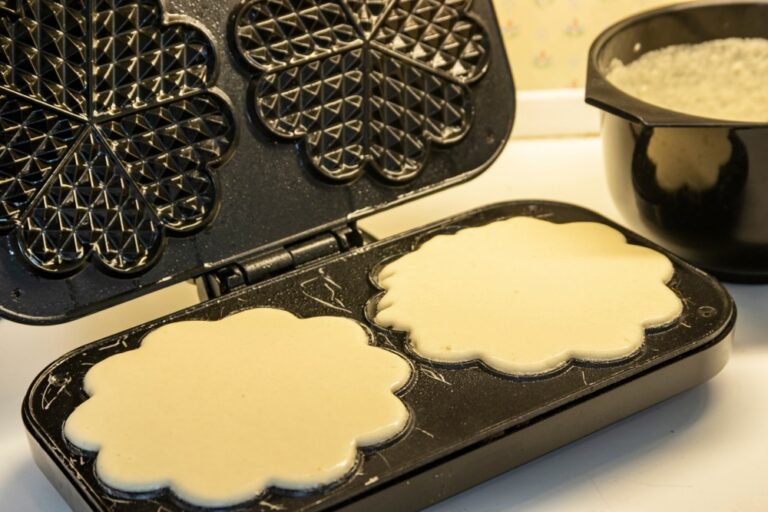
To cook the waffles, use a Norwegian waffle iron. These are available online (affiliate link) but do make sure you get one with the correct voltage if you’re in the US or Canada.
Ingredients
- 6 eggs
- 275 g sugar (US: 1¼ cup)
- 750 g white flour (US: 6 cups)
- 2 tablespoons baking powder
- 1 tablespoon vanilla sugar (US: ½ tablespoon vanilla extract)
- 1 litre milk (US: about a quart)
- 190 g melted butter (US: 1⅔ stick)
- 300 g soured cream (US: 1¼ cup sour cream)
Preparation
- Beat the eggs together, adding the sugar gradually.
- In another bowl, mix together flour, baking powder and vanilla sugar (if used).
- Add the flour mixture to the egg mixture gradually while beating, alternating with the milk.
- Mix in the melted butter.
- Incorporate the soured cream and vanilla extract (if used) and let the batter rest for a few minutes.
- Cook the waffles!
This recipe makes a big batch so feel free to cut it down by half. Cooking time varies according to the iron. Some of them have an indicator light to guide you.
Remember: this is not a low-fat recipe. You will need to smear the waffle iron with butter regularly between waffles if you don’t want to end up with one big sticky mess. Enjoy!





Your tales about waffles being made while you wait puts me in mind of a visit to Fjærland, the book-town, when we visited a cafe there. I remember the sweet smell of waffles being made to order.
I still have the solid 20cm diameter aluminium waffle-iron made in Høyanger that was given to my wife & I when visiting her parent’s home in Ytre Sogn many years ago. Always a bit messy to use with the “lubricating butter” dripping off the iron! Now it hangs unused in an outhouse having been superceded by electric models made in Germany and sold by Lidl.
I tend not to make waffles now that my wife has died but I am temopted to try your recipe.